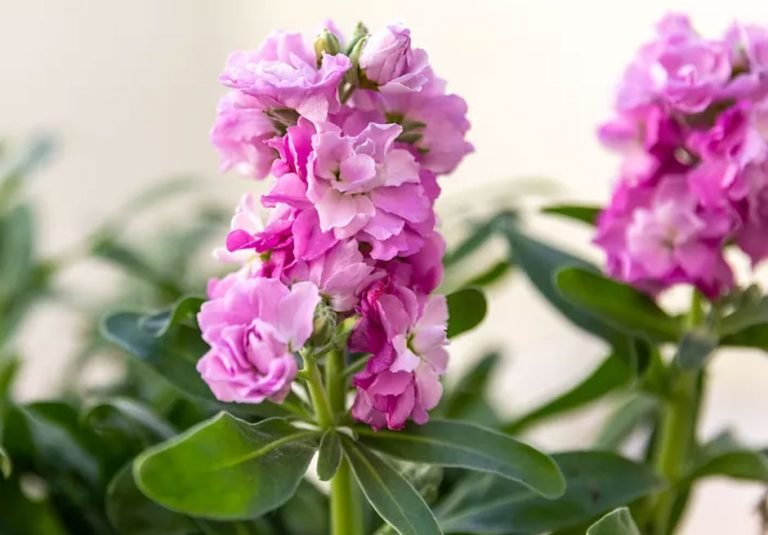Stock flowers with their pretty pink petals and delicate fragrance have been a favorite of gardeners for hundreds of years. Once known as gilly flowers in England, these charming cottage garden plants have come a long way and are now available in dozens of colors, including white, blue, green, pastel pink, vibrant shades of crimson, and purple. The flowers are not only colorful but also have a delicate taste and can be added to salads or used as a garnish on desserts. In this article, we’ll provide you all the necessary information on how to grow beautiful white stock flower plants in your home garden.
Getting Started
White stock flowers are easy to grow plants, and you can get started with a packet of stock flower seeds. Here are a few things you need to keep in mind when growing white stock flowers:
Sunlight and Soil
Stock flowers thrive in full sun and well-drained soil. Choose a location in your garden that receives at least 2-3 hours of sunlight per day. The soil pH should be close to neutral, i.e., 6.8 to 7.5, and rich in nutrients. If you’re planting in containers, use a commercial potting mix.
Watering and Fertilizing
Water your stock plants regularly, especially during hot summer days. However, be careful not to overwater, as this can cause yellowing of the leaves. Fertilizer isn’t always necessary, but a thin layer of natural mulch can help prevent weed growth and keep the soil evenly moist and cool.
Temperature and Humidity
Stock flowers prefer cool weather and may not bloom well in extreme humidity or consistently moist tropical conditions. The plant can tolerate frost and will keep blooming even after one or two frost events.
Pruning
Deadheading the plant regularly is necessary to keep it looking tidy and encourage new growth. Pruning will also increase the chances of getting more blooms, based on the variety.
Varieties of White Stock Flowers
White stock flowers come in numerous varieties, and each variety has its unique beauty. Here is a list of some of the popular white stock flower varieties:
White Night Stock
This is a lovely variety that is entirely white, with sweetly fragrant flowers that bloom on 24-inch tall plants. This variety is best grown in USDA zones 7-10.
Snowdrift Stock
This is a highly fragrant white stock variety that blooms in clusters on plants that grow up to 18 inches tall. Snowdrift is best grown in USDA zones 8-10.
Wedding Bells Stock
This variety has fragrant, double white flowers that bloom on 18-inch tall plants. Wedding Bells’ stock is best grown in USDA zones 7-10.
Growing White Stock Flowers from Seeds
Growing white stock flowers is easy if you follow a few simple steps:
- Prepare the soil: Cultivate the ground to loosen it up and incorporate compost or aged manure. The soil pH should be around 6.8 to 7.5.
- Sow seeds: Sow the seeds outdoors in the spring or fall, barely covering the seeds with 1/8″ of soil.
- Water the seeds: Gently water the planted seeds with a spray mister.
- Germination: Stock seeds should germinate in 10-14 days.
- Transplant the seedlings: Transplant the seedlings when they have grown to about 2-3 inches tall.
Pests and Diseases that Affect White Stock Flowers
Like any other plant, white stock flowers are susceptible to certain pests and diseases. Here are a few common pests and diseases that can affect your stock plants:
Pests
Aphids, flea beetles, and cabbage white caterpillars are some of the pests that can cause problems for stock plants. If you notice pests, use an insecticidal soap or remove them from the plant by hand.
Diseases
Stocks are prone to numerous fungal diseases, including fusarium wilt, gray mold, leaf spot, and root rot. Overwatering is one of the main causes of these diseases, so be careful not to water the plants excessively.
In conclusion, white stock flowers are a beautiful addition to any garden and easy to grow. With a little bit of care and attention, you can enjoy their delicate fragrance and beautiful blooms in no time. Happy Gardening!


